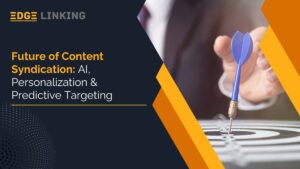Artificial intelligence transformed the marketing universe at a pace faster than lightning, bringing with it automation, predictive analytics, and personalization to unprecedented levels. While AI has enhanced effectiveness and efficiency, it has also given rise to new challenges for marketing agencies, particularly in terms of pricing their offerings.
Conventional pricing models are being turned on their head, forcing agencies to think anew in a bid to be profitable and competitive.
Since AI is constantly changing, it not only revolutionizes the way agencies function in the marketing sector but also alters customer expectations. More and more businesses are becoming aware of AI-based solutions and are expecting faster, cheaper, and better services.
This forces agencies to reconsider how they structure their price models to incorporate AI’s potential without sacrificing profitability. In addition, AI-driven insights form a data-driven approach towards marketing, forcing agencies to deliver differentiated value beyond what AI can automate.
Moreover, the rising AI-based platforms are increasing competitiveness in the market. The majority of companies are using AI-based tools internally to reduce the deployment of external agencies. Marketing agencies must differentiate themselves to stay current by providing strategic consulting, creativity, and custom services that can’t be accomplished through AI.
Understanding these transformations and adapting the pricing model appropriately is crucial for agencies to live in an AI-dominated business. On this blog, we talk about how AI is revolutionizing marketing agency pricing, the pitfalls that come with it, and ways in which agencies can adopt new pricing models to thrive in an AI era.
The Issue with AI and Pricing
AI has changed fundamentally the cost profile of marketing agencies. Some of the main challenges it brings along are:
1. Automation Reducing Billable Hours
Many marketing agencies have traditionally relied on hourly billing models. But AI tools such as ChatGPT, Jasper, and Copy.ai are capable of producing quality content, scheduling social media posts, and even interpreting marketing data in a matter of minutes that would take a human hours. This saves billable hours, compelling agencies to reconsider their pricing model.
2. Commoditization of Marketing Services
AI has opened up many marketing services, including content generation, SEO optimization, and ad targeting, to more affordability and accessibility. With companies being able to implement AI tools in-house, agencies have to make their offerings unique beyond what can be done with AI. This places pressure on agencies to defend their pricing.
3. Client Expectations for Lower Costs
Customers are more conscious that AI has the potential to lower marketing expenditure. They expect agencies to be able to share these savings with them, thus creating pressure on prices to come down. Agencies must balance keeping profitability while being competitive in their rates.
4. Data and AI Subscription Fees
While AI makes things more efficient, it does come with the added costs. Agencies will need to spend on AI-based software, subscription products, and analytics platforms. Such costs need to be included in pricing models in order to create a sustainable setup.
Tech-Proof Pricing for an Evolving Business Environment
To counteract these issues, marketing agencies need to transform pricing models. Consider the following ways:
1. Value-Based Pricing
Rather than being billed by the hour, agencies need to concentrate on the value of their work. AI enables superior data analysis and better outcomes, so the pricing needs to be based on the effect of marketing campaigns instead of the time it takes to implement them.
2. AI-Assisted Pricing Models
Agencies can utilize AI to evaluate project expenses, forecast results, and calculate the most lucrative pricing structures. AI may assist in applying dynamic pricing according to industry trends, demand, and client budgets.
3. Tiered Pricing and Subscription Models
Tiered pricing or subscription models are increasingly being implemented by agencies where clients are charged a monthly fixed amount for accessing certain AI-based services. This provides a consistent income stream with clients enjoying flexibility.
4. Hybrid Pricing Models
A blend of hourly fees, project-based pricing, and performance-based models can offer a balanced solution. For instance, agencies may levy a basic fee for AI-based work but have performance-based incentives for campaign effectiveness.
5. Tailored Service Packages
Providing customized packages depending on human and AI expertise can make an agency stand out. Clients are prepared to pay extra for strategic advice, creative contributions, and human monitoring—areas that cannot be substituted by AI.
Adopting Deliverable-Based Pricing
One of the most effective ways to counter AI’s impact on pricing is by adopting a deliverable-based pricing model. This approach focuses on the tangible results an agency provides rather than the time or effort spent. Examples include:
• Content Packages: Instead of charging per hour for content creation, agencies can price per blog post, whitepaper, or video.
•Campaign-Based SEO and PPC: Billing based on campaign outcomes like higher website traffic or leads generated.
•Social Media Account Management: Flat monthly fees for managing accounts irrespective of the hours worked.
•Data Analysis and Reporting: Billing based on insights provided and not on hours of data analysis.
By basing pricing on deliverables, agencies are able to future-proof their business from AI-facilitated cost savings while being profitable. Deliverable-based pricing also gives clarity to clients since they know they are paying for a specific output and what that output will look like.
Deliverable-based pricing also changes the perspective from time to value delivered, enabling agencies to position themselves as strategic partners more effectively than mere service providers.
In addition to this strategy, agencies should also establish quantifiable measures for success. For instance, rather than providing run-of-the-mill SEO services, agencies may charge according to pricing levels against ranking gains, organic traffic, or conversion levels.
Similarly, social media management can be priced according to engagement metrics and audience growth rather than mere content posting. This change will guarantee agencies get paid for their skills and tangible outcomes instead of being undercut by the speed with which AI can do mundane work.
The Future of AI and Marketing Agency Pricing
With growing AI, agencies will have to catch up by coming up with better models of pricing. The way out is to balance AI-fuelled efficiency with human imagination and strategic perspective. Agencies that leverage AI as an enabler, not a competitor, will be able to enhance their offerings while keeping viable models of pricing.
In addition, as AI tools continue to advance, agencies must reskill constantly and provide differentiated insights that AI alone can’t offer. This shift will not only help agencies retain clients but also premium price for their services.
Conclusion
AI is certainly changing marketing agency pricing, and traditional models are becoming less tenable. Agencies will need to respond by embracing value-based, tiered, hybrid, and deliverable-based pricing models. With AI being used to optimize efficiency while maintaining emphasis on human knowledge, imagination, and strategic wisdom, agencies will be able to stay relevant and profitable in the age of AI.
Within this fast-paced environment, success depends on accepting the benefits of AI while positioning pricing to acknowledge automation as well as human worth. Agencies that balance both will succeed in the next age of marketing services.





